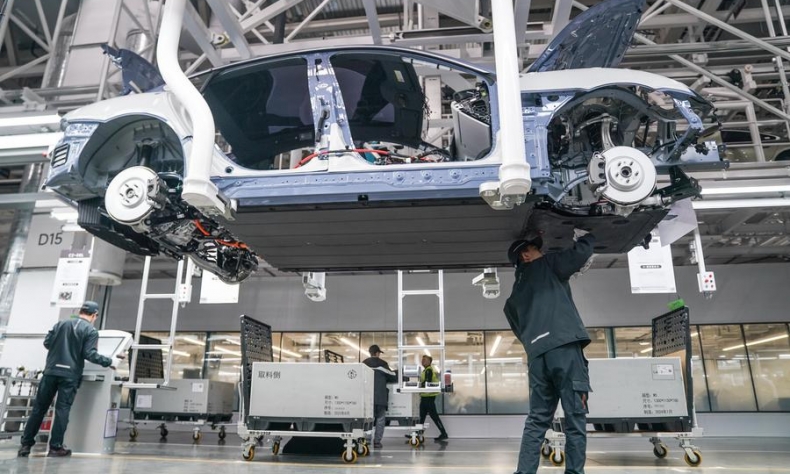Will China Bring Changes at the Table or on the Menu?

China’s rise has had a foundational global impact, significantly reframing Blinken’s narrative.
You’re either at the table or on the menu when it comes to international relations, U.S. Secretary of State Antony Blinken stated when commenting on U.S.-China relations at the Munich Security Conference earlier this year.
These remarks by Mr. Blinken have raised the question in many parts of the world as to who are to be at the table, who are or what is to be on the menu, and who will decide the arrangement in future global politics with the changes that have come along with China’s rise.
If you’re accustomed to deciding not only who gets a seat at the table and the order of seating but also what (or who) is on the menu, then China’s rise is perceived as a threat. Conversely, if you find yourself currently “on the menu,” then China’s rise creates enormous possibilities for an alternative future.
This alternative future relies on changes in the fundamentals of economic development and transnational interactions. Based on enhanced economic sovereignty, nation-states that have previously been sidelined or, worse, “on the menu,” can now project with greater confidence their own development interests. Furthermore, they can now aim to realize the political sovereignty promised by the decolonization movements of the 1950s and 1960s.
With its growth over the past 40-plus years, China has significantly accelerated the reform of the global economic system. From a system where most nations were peripherals serving a minority at the core, we are witnessing the historic decentralization of economic and political powers. New networks of economic value flow are emerging and solidifying, as peripheral and semi-peripheral nations increasingly engage in mutual commerce.
Twenty-three years ago, the G7 nations accounted for approximately 43.5% of global GDP based on purchasing power parity, despite only having 11.3% of the world’s total population. However, today’s patterns of economic development are seeing a new distribution of global wealth. By 2023, the G7’s claim of global GDP had fallen to 29.92%, with their population share dropping to 9.64%. In contrast, the GDP share of the BRICS nations has increased from 18.19% to 32.14%, according to the German statistics database Statista.
Today, China is the major trading partner for over 140 countries and regions. China’s trade with the other members of the Global South, including its partners in BRICS, now surpasses its trade with the U.S., the EU, and Japan combined. Additionally, China’s trade with ASEAN is now greater than its trade with the EU. The growth of China’s trade with countries signed up to the Belt and Road Initiative (BRI) has exceeded the overall trade growth. The patterns of trade continue to evolve as economic development progressively enhances the capabilities of more nations.

China is both a supplier of finished and intermediate goods and a market for a wide array of products from around the world. It is one of the world’s largest consumer markets, with a middle-income group exceeding 400 million.
China is now also the world’s largest development finance provider, with US$1.34 trillion in loans and grants provided over 22 years. China has financed almost 21,000 projects in 165 low- to middle-income nations, according to the Wall Street Journal. Through the BRI, China has significantly boosted the economic development of the Global South over the past decade by investing in foundational economic and social infrastructure. While critics have raised concerns about “debt trap diplomacy,” their arguments have been discredited on substantive grounds by the detailed research of scholars like Deborah Brautigam.
Not only has China contributed to the financing of durable economic infrastructure, but Chinese firms are also now beginning to invest in downstream value-adding capacity. This trend is observable in various sectors, such as nickel refineries in Indonesia and tire manufacturing in Serbia. Additionally, Chinese companies are investing in electric vehicle manufacturing worldwide, including BYD’s plants in Hungary, Thailand, Mexico, and Brazil. Recently, it was reported that the Italian government had approached BYD to consider setting up a plant in Italy.
As the global economic structure continues to evolve, and new networks of value flow flourish, the long-established colonial center-periphery model is steadily losing its relevance.
The model is showcased by the United States, which has dominated the global economic and political landscape for the last 30 years. This has been known as the “unipolar moment.” With the shift in the global landscape, however, the U.S. unipolarity and primacy are quickly becoming things of the past. Although it may still believe it has the authority and the right to dictate who sits at the table and who is on the menu, yet the U.S. holds little attraction for the Global South, and its top-down approach of “do as I say” works no longer. Indeed, the world is not what it used to be, and China has helped bring about changes to both the table and the menu.
All in all, China’s rise has had a foundational global impact, significantly reframing Blinken’s narrative. Economic development is increasingly a table at which every nation has a seat. The menu is collaboratively created and mutually shared. For some, this change may mean painful adjustment, although it will bring them long-term benefits by creating a better world. For others, it represents an immense opportunity to complete the decolonization process that began over seven decades ago, allowing them to achieve national prosperity.
Warwick Powell is adjunct professor at Queensland University of Technology and a senior fellow at the Taihe Institute. He is the founding chair of Smart Trade Networks.
 Facebook
Facebook
 Twitter
Twitter
 Linkedin
Linkedin
 Google +
Google +










